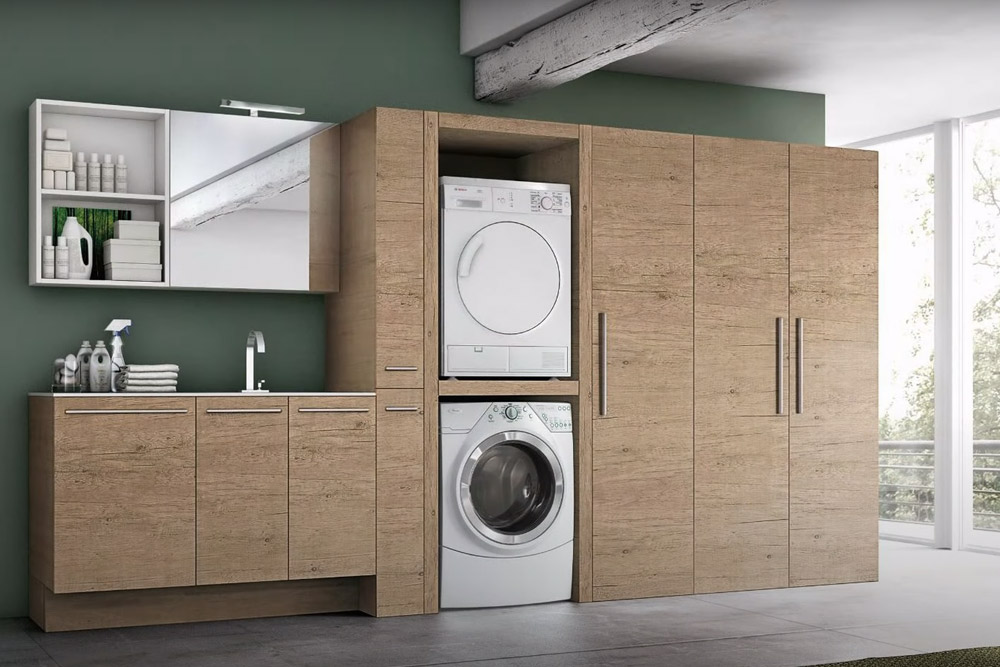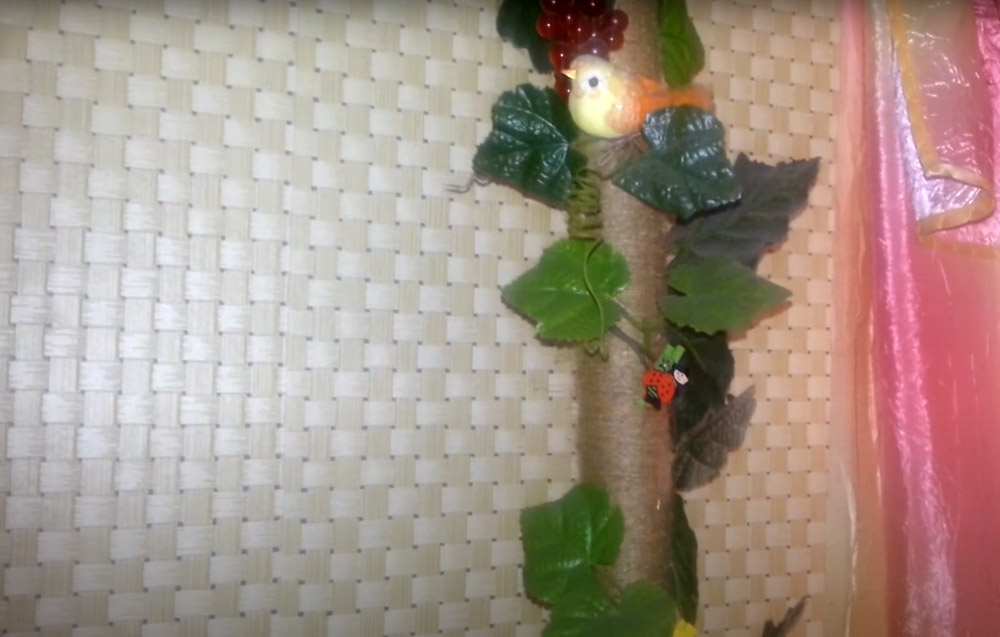
Dryer vents are often an eyesore in the laundry room, but they are essential for venting the hot air that comes out of your dryer. How can you hide this unsightly hose? There are many ways to do so! In this blog post, we’ll show you how to hide your dryer vent hose with a few different methods.
Venting the dryer
The first step is to vent your dryer properly. Depending on the instructions from your dryer’s manufacturer, you may have a vent opening on the back, top, side, or front of your dryer.
To keep things simple, we’ll use a household example that vents with a duct opening in the top of the dryer.
How do I know that my dryer has a duct opening?

- If there was no cutout for a venting pipe with an exhaust hole at the top of your appliance.
- There is a rectangular or square hole in the backside of your dryer about 2 inches tall and 4 inches wide
- There is an opening inside the crease left by lifting the top of your dryer
- There is a slot on the left side or right side near the back of your appliance.
How do I vent my dryer?
You can either have an exterior hose installed directly outside, through which all hot air will pass before being expelled from your home. Or you could install an interior duct that vents out one of those previously mentioned openings inside the crease where you lift and open the top lid of your appliance.
Although this option might make it slightly more difficult to clean behind and around the built-in dehumidifier (if applicable) at times because it would be obscured by insulation rather than easily accessible like with an external venting system.
What can be done about this dryer vent?
You’ve probably seen the dryer vent hose sticking out of a wall. How unattractive! You don’t have to put up with that any longer, though. Here are some economical and easy ways to conceal your dryer vent hose from sight – no more ugly pipes!
Recessed Dryer Vent Box

A recessed dryer vent box is a metal or plastic box that installs inside the wall cavity, close to where your clothes dryer sits. How does it work? The hose connects into this fixture and then voila! You have an attractive coverup for unsightly vents lying within walls.
This type of product will cost you around $15-30 dollars depending on size requirements at Home Depot or Lowe’s – not too shabby when compared to hiring someone else to do the installation which can be up there in price between $100-$250 if done correctly (and safely) with permits. For more information on exactly what kind of dryer vent boxes are available today, check out the additional information on the Internet.
A simple cabinet from the floor to the top of the duct

A very practical option is to simply install a cabinet or shelving unit that will conceal not only your dryer vent but also any excess laundry supplies. How attractive!
If you’re feeling adventurous, consider using some of the scrap wood lying around in your garage and build one yourself. Shabby chic? Perhaps so; however, this idea can be just as simple as having an old dresser sit underneath it with decorative knickknacks on top – whatever works for you!
You may need to measure carefully depending on space availability if the building/buying your product because there are certain specifications required by code (in most areas) when venting clothes dryers within walls (not outdoors). The important guidelines include:
- Using metal piping
- Providing an air gap between the dryer and any combustible material (drywall, wood studs)
The size of this ductwork will vary depending on your make/model; however, it is usually around two inches by four inches. How convenient! This information can be found printed inside the instruction manual for most appliances.
If you’re not sure about installing a venting system yourself, call in that handyman or plumber because safety should always come first when dealing with gases such as hot water vapor from clothes drying processes at home.
How to Hide Dryer Vent Hose in the Ceiling?

Hanging drywall on the ceiling helps conceal the vent hose underneath it. This is an ideal solution for concealing metal vents that run horizontally across ceilings and are attached directly to wall studs with screws at all four corners of each joist bay. Cut a section from your scrap piece of drywall so the two pieces fit together exactly along their length—no gap between them whatsoever!
Set both pieces into place against opposite sides of duct opening using a screwdriver bit sticking out from drill/driver’s chuck as a handle for extra leverage if needed, then fasten securely by screwing top plate over the plate where they meet the floor.
How to tastefully conceal a dryer vent?
There are many ways to conceal the dryer vent hoses depending on space availability, personal preference – even budget limitations.
A pot of plants/flowers

What an innovative idea! How about hiding the dryer vent hoses with a planter of flowers or decorative foliage? How natural and artistic! This is also one of those ideas that can be as simple as having some potted plants sit underneath it.
Decorating a pipe under a tree with artificial leaves

We’ve all seen those fake holiday trees with the leaves attached to a decorative metal pipe frame. How about applying this idea to your dryer vent hoses so they are hidden away yet tastefully done?
This is one of those ideas that can be as simple as gluing artificial flowers/foliage onto it or even specific tree bark to mimic nature! How creative! The possibilities are endless when it comes down to decorating these types of products, just use some imagination and experiment around until you find that perfect match for your home.
Masking the ventilation pipe using roller shutters
How about camouflaging the dryer vent hoses with roller shutters? How stylish!
This is one of those ideas that can be as simple or luxurious as you like depending on your budget. If money isn’t an issue, then perhaps go for something extravagant such as French-style shutter blinds (or even Venetian). How elegant!
On the other hand, if finances are tight but you’re still looking to maintain a classy look in your home without breaking the bank, why not try something more modern and sleek such as aluminum mini-blinds instead? How trendy! Whatever you choose – keep it consistent throughout all windows so they appear uninformed. There is no limit when it comes down to designing these types of products; however, keep in mind safety and code requirements when venting clothes dryers within walls.
Combination of open shelves and doors

How about creating a combination of open shelves and doors? How functional!
Think about this situation: How do you feel when someone sees your junk? How organized would you like your belongings to be? How about having storage space open for everyone’s viewing pleasure with doors on top of it so they are out-of-sight yet still within reach when needed. How convenient!
This is one of those ideas that can be as simple or luxurious depending on your budget and preference but just remember – keep consistent throughout all units (a combination) so the overall look appears uniform. How elegant!
Doors in front of the duct

Doors in front of the duct provide a simple but versatile way to hide the dryer vent hose. This method works well for concealing both standard (flexible metal) and semi-rigid (rigid aluminum foil) vents that run horizontally across ceilings, through walls, or exit through windows.
Slide in the door one with its hinges toward the back of the opening. Put screws in top and bottom hinge plates and set them into place, screwing at all four corners where the floor meets walls until secure.
How to stack washer and dryer – Reroute dryer duct vent

A vent hose can make a dryer installation look unprofessional and dirty. How can you hide the vent hose? You may want to consider rerouting the vent hose or making it less visible.
The first thing you can do is route the dryer duct vent along an inconspicuous part of the wall instead of running it across your floor. This method hides the hose by making it easier to tuck behind molding or baseboard trim.
An alternative to rerouting the duct hose is to put an extra support beam in place to hang it from. Many different types of hangers will suit your needs. Some hangers will only need a drill and screwdriver for installation, while other hangers will require some sheetrock work.
A third method is to attach a dryer hose hanger, sometimes referred to as a “vent cover” or “dryer vent concealment system”, over the opening of your wall. This would be applied after you drill two holes into each side of the studs to install screws that come with this type of product. Once it is attached, simply tuck the duct hose behind and use zip-ties on either end for extra support if need be.
New Home dryer box insulation
If you are in the process of building a new home, it is worth considering adding extra insulation to your dryer box. This will help with energy loss and make for more efficient drying times.
Insert washing machine supply line vent into drywall opening. An exterior wall would be preferable for installation as then once complete; that side of the wall could simply be patched and painted over.
How to Clean a Dryer Vent?

How do you keep the lint from clogging up and slowing down airflow?
There are several ways that you could go about cleaning out a dryer vent depending on how much work is needed.
If there isn’t a lot of lint built up, then all that may be needed is a good vacuum. If the hose has been blocked by excessive amounts of lint, however, it might take more than just a quick sweep with your household cleaner.
You should follow any instructions given carefully as these products can cause damage if not used properly or in some cases they may even create an additional fire hazard due to their flammable properties.
How to Clean a Dryer Vent?

- Remove lint from the dryer by vacuuming or shaking it into a trashcan.
- Inspect the vent hose and replace it if damaged.
- Vacuum inside the dryer drum to remove any lint that may be stuck.
- Disassemble the back of the dryer where the exhaust goes out, making sure not to disconnect any ducts.
- Use metal slotted brushes to clean away lint where the exhaust exits at the back of the dryer.
- Vacuum up all dust that was loosened from cleaning with brushes.
- Look for any cracks in duct vents, which may let lint escape. Replace damaged vents.
Conclusion
The first thing to consider when deciding how to hide the hose is where it’s located and what size it is. How long, wide, and tall the vent hose itself is will play a big role in determining what products can be used to cover or conceal it because these factors all affect its flexibility and ability to hold up against different types of materials like paint, wallpaper, fabric, etc…
The type of dryer you have will determine which method is best suited for your needs. It is important to have a dryer vent hose that fits in with the decor of your home. And was also protected from pets or children.
